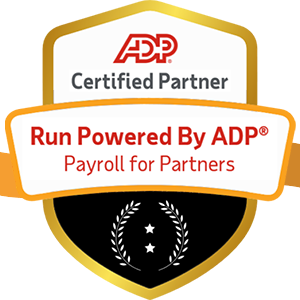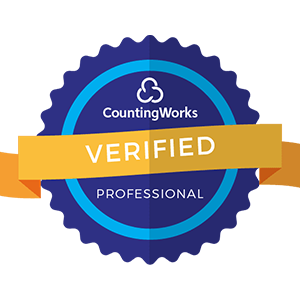
In today's hyper-competitive job market, retaining top talent is more critical than ever before. The cost of losing a high-performing employee can be astronomical—up to 2x their annual salary when you factor in recruiting, onboarding, training, lost productivity, and the ripple effects on team morale.
But what if you could predict which employees were at risk of leaving before they even started looking for other opportunities? Enter predictive analytics.
By leveraging data and advanced machine learning algorithms, companies can now build "early warning systems" to proactively identify employees who may be considering other job options. Armed with this insight, managers and HR leaders can intervene early to re-engage at-risk employees, address their concerns, and ultimately convince them to stay.
Here's how predictive analytics is transforming employee retention—and how your organization can implement it effectively.
To predict potential turnover, you first need to understand the key factors that cause employees to leave. While every situation is unique, research reveals consistent patterns across organizations:
Lack of Growth Opportunities: High-potential employees want to continuously learn, develop new skills, and advance in their careers. If they feel "stuck" in their current role with no upward mobility, they're significantly more likely to seek opportunities elsewhere.
Poor Management Relationships: As the saying goes, "people don't leave jobs, they leave managers." Employees who don't feel supported, appreciated, or empowered by their direct supervisor are prime candidates for turnover.
Burnout and Work-Life Imbalance: In today's "always on" work environment, employee burnout has become epidemic. Long hours, unrealistic deadlines, and blurred boundaries between work and personal life quickly lead to disengagement and voluntary departures.
Uncompetitive Compensation: While pay isn't everything, it's undeniably important. Employees who feel underpaid compared to market rates—or that their compensation doesn't reflect their contributions—are more likely to jump ship for better offers.
Cultural Misalignment: Every organization has unique culture and values. Employees who don't feel a strong sense of "fit" with company culture often struggle to engage and may seek work environments that better match their preferences and values.
The foundation of effective prediction: By analyzing historical turnover data, companies can identify which factors tend to be the biggest predictors of voluntary attrition in their specific environment. This insight becomes the foundation for building accurate predictive models.

How exactly does predictive analytics for retention work? While specifics vary by organization, the process follows a structured methodology:
The first step involves aggregating relevant data from various HR systems:
Key insight: Both structured quantitative data and unstructured qualitative information provide valuable predictive inputs.
Raw HR data is often messy and incomplete. This step requires:
Not all variables equally predict turnover. This phase involves:
Data scientists leverage advanced algorithms to build predictive models:
Trained models undergo rigorous testing:
Validated models generate actionable insights:
The ultimate goal is driving proactive retention interventions:
While predictive retention analytics holds immense potential, success requires careful attention to critical factors:
Executive Sponsorship and Cross-Functional Collaboration: Predictive analytics requires major investment and close partnership between HR, IT, and business units. Active executive support is essential for securing resources and driving adoption.
Pilot Program Approach: Begin with limited proof-of-concept focused on specific high-turnover job roles or business units. This builds trust in data and models before organization-wide expansion.
Predictive and Prescriptive Integration: Prediction alone isn't sufficient. Provide managers with concrete guidance on optimal actions to re-engage at-risk employees. Combine risk scores with prescriptive recommendations for maximum impact.
Continuous Model Maintenance: Employee behavior constantly evolves, and predictive models can quickly become outdated. Monitor performance regularly and refresh with new data to maintain accuracy.
Bias Detection and Mitigation: Predictive models can perpetuate existing biases in historical data. Carefully audit algorithms for adverse impact and implement "de-biasing" techniques where necessary.
Ethical Implementation: Ensure predictive analytics enhances rather than replaces human judgment. Use insights to support better management decisions, not to unfairly penalize or surveil employees.
Stakeholder Communication: Predictive retention models can feel intrusive to employees and managers. Invest in thoughtful change management that emphasizes the goal of helping managers become better coaches, not "catching" people planning to leave.
Training and Support: Provide managers with training on how to interpret risk scores and conduct effective stay conversations. Support them with resources and coaching to act on insights effectively.
As organizations mature in their predictive analytics capabilities, several advanced strategies can enhance effectiveness:

The battle for talent shows no signs of slowing down. If anything, it will intensify as skill shortages grow and employee expectations continue to rise. Several trends are shaping the future of predictive retention:
Real-Time Analytics: Moving from periodic risk assessments to continuous monitoring with immediate alerts for significant changes in employee engagement or satisfaction.
Natural Language Processing: Analyzing communication patterns, email sentiment, and collaboration data to identify early warning signs of disengagement.
Wearable Integration: Incorporating stress levels, work patterns, and wellness data to provide holistic pictures of employee experience.
Total Talent Management: Connecting retention predictions with recruiting, performance management, and succession planning for comprehensive talent strategies.
Business Impact Modeling: Linking individual retention predictions to business outcomes, revenue impact, and customer satisfaction metrics.
Cultural Analytics: Understanding how organizational culture changes affect retention patterns and employee satisfaction across different groups.
Forward-thinking organizations recognize that retention is just as critical as recruiting—and they're turning to predictive analytics to stay ahead of turnover before it happens. By leveraging the power of data to identify at-risk employees, managers can proactively engage team members, uncover hidden issues, and take action to keep their best people engaged and committed.
The reality check: Predictive retention analytics isn't a replacement for good management. It's a powerful tool to help leaders be more proactive, targeted, and data-driven in how they support and develop their teams.
The competitive imperative: In a world where employees have more career options than ever, this capability isn't just nice-to-have—it's a business necessity. The companies that harness the full potential of predictive retention analytics will be the ones that win the war for talent in the years ahead.
Your next step: Start by understanding your organization's primary turnover drivers through data analysis and exit interviews. Then explore pilot programs that can demonstrate the value of predictive approaches before scaling organization-wide. The investment in predictive retention analytics today will pay dividends in talent retention, reduced costs, and competitive advantage tomorrow.
The bottom line: The shift from reactive to proactive retention strategies represents a fundamental evolution in talent management. Organizations that embrace this change will not only retain their best people but also create workplace cultures that attract top talent and drive superior business results.


